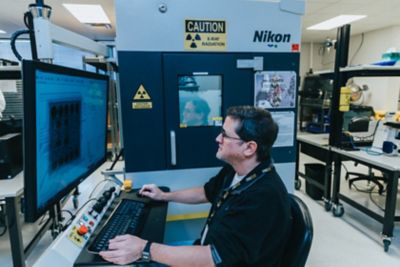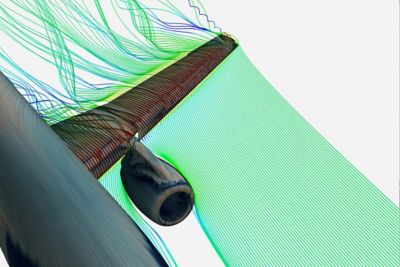With the new year, Ansys Optics has once again raised the bar with Ansys 2025 R1. Packed with new features aimed at tackling long-standing challenges in both the optics and photonics industries, this release serves to enhance the design and simulation process for engineers and designers alike. We caught up with Ansys Optics Product Managers Tom Pickering, Etienne Lesage, and Charly Meyer to ask about some of the advances in this release and how they are transforming the industry.
One of the key challenges in the optics industry has always been managing the effects of stress birefringence. How does Ansys 2025 R1 address this?
Tom Pickering, Ansys Zemax product manager: This is an area we’ve been working on for a while. Birefringence occurs when stress in optical materials alters the light’s polarization, which can drastically affect the performance of optical systems. This challenge is particularly prevalent in industries like automotive displays and augmented reality devices, in which real-world stress during manufacturing or use can be unavoidable.
With 2025 R1, we’ve introduced tools that enable designers to better simulate how stress impacts light’s behavior in optical systems. This gives them a more accurate prediction of how stress will affect the final product, helping to prevent performance issues down the line. Being able to model and manage these stress-induced changes early on leads to more reliable, high-quality optical systems.
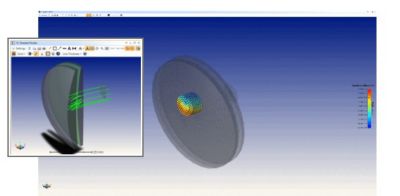
Ansys 2025 R1 introduces tools that enable designers to better simulate how stress impacts light’s behavior in optical systems.
That sounds like a game-changer for optical product designers. This release also introduces Dark Mode. Can you explain how this improves usability for engineers and designers?
Pickering: Absolutely. Dark Mode is a small change that has a big impact, especially for those who spend long hours designing. The main benefit is reduced eye strain and glare, particularly in low-light environments. Anyone who’s worked late into the night will know how harsh bright screens can be, so this feature helps designers focus more easily and comfortably. It’s a simple yet effective way to improve the overall user experience, giving you better control over your workspace and reducing fatigue during those marathon design sessions.
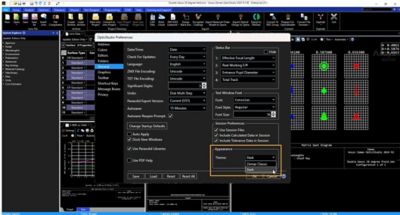
Ansys 2025 R1 introduces Dark Mode for optical product designers
What would you say you’re most proud of in this release?
Pickering: That’s a tough one because there are a lot of exciting features in this release. But if I had to pick, I would say it’s the new Mechanical Pivot Point (MPVT) operand. This tool simplifies the process of defining and simulating mechanical pivot points in optical systems, improving accuracy and design precision. It’s a feature that will have a direct impact on the quality of optical designs.
Additionally, a new button in the Tolerance Data Editor makes generating Monte Carlo files much easier, which will save designers a lot of time and effort. Plus, being able to see these pivot points in the layout plots adds an extra layer of clarity to the design, making it more intuitive and user friendly.
Another key aspect of this release is the focus on photorealism and appearance properties. How does the 2025 R1 update address this challenge?
Etienne Lesage, Ansys Speos product manager: In the optics industry, achieving accurate optical properties is crucial, especially when it comes to ensuring that the final product matches the desired appearance. Texture properties are key to achieving photorealistic rendering, and our update now supports appearance properties through AxF files. These properties, along with X-Rite measurement devices, make it much quicker and easier to acquire new appearance data, which is essential for designers to assess how their products will look in the real world. This update really takes simulation closer to reality, improving the photometric rendering and overall realism of designs.
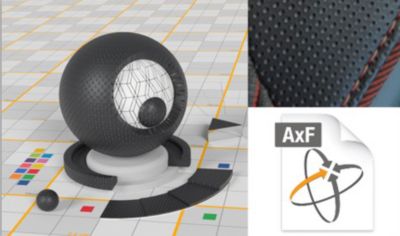
The latest Ansys update now supports appearance properties through AxF files.
For automotive lighting designers, the task of balancing optical performance with styling constraints can be quite challenging. How does this release assist with that?
Lesage: You’re absolutely right — it’s a difficult balance to strike. Automotive lighting designers need to ensure that the optical system meets both performance and styling requirements. Ansys 2025 R1 introduces new design capabilities for optical lenses that simplify the process. The update offers an all-in-one approach to tuning individual total internal reflection (TIR) lens parameters and combining them with optical lenses. This lets designers apply styling surface trimming seamlessly, resulting in a final geometry that is ready for simulation and optimization. It speeds up the design process by reducing the need for multiple operations and makes it easier to respect styling constraints while maintaining optical performance.
One of the more exciting developments is the release of PySpeos. Could you share more about how this will benefit Speos users?
Lesage: PySpeos is one of the features I’m personally most excited about. One of the biggest challenges users face is automating complex workflows and handling repetitive tasks, and PySpeos helps solve that. By providing a Python-based scripting environment, users are able to automate processes outside the Speos graphical interface. The real excitement, however, comes from the fact that PySpeos is available on Github, which means that it can foster the growth of a community of Speos users contributing their own scripts and workflows. This will enable engineers to tailor their simulations and designs to an even greater degree, benefiting from the collective knowledge and creativity of the community. It’s a big leap forward in terms of flexibility and collaboration.
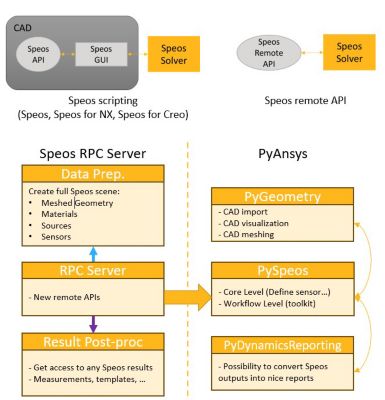
Ansys PySpeos tools help users automate complex workflows for handling repetitive tasks.
Finally, let’s touch on the photonics industry. The Lumerical suite has always been known for its powerful simulation capabilities. What new features in 2025 R1 specifically address the challenges of speed and model size?
Charly Meyer, Ansys Lumerical product manager: In the photonics world, one of the biggest challenges is balancing simulation speed with the ability to work with larger models. Ansys 2025 R1 addresses these concerns with several key performance improvements. We’ve added linear multi-GPU performance, which enables users to run simulations faster by efficiently leveraging multiple NVIDIA GPUs with NVlink technology. We’ve also reduced GPU memory usage by 50%, which makes it possible to work with larger models without running into GPU memory limitations. Finally, meshing has been optimized to be 20% quicker, which significantly reduces the time before simulations. These improvements will enable photonics engineers to get faster results without compromising on accuracy.
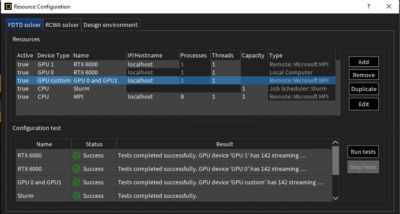
Ansys 2025 R1 adds linear multi-GPU performance, which enables users to run simulations faster by efficiently leveraging multiple NVIDIA GPUs with NVlink technology.
What are you most proud of in the photonics section of this release?
Meyer: For me, the standout feature in the photonics section of this release is the new signal integrity co-packaged optics (CPO) workflow. This new workflow focuses on the effects of radio frequencies on optical signals in 3D integrated circuits (3D-ICs). By combining Cadence Virtuoso for electrical circuit modeling, Ansys RaptorX software for RF interconnect simulation, and Ansys Lumerical INTERCONNECT software for electro-optical co-simulation, we’ve created a comprehensive solution that enables users to evaluate the full performance of the CPO system. It’s a great solution for anyone working on the intersection of photonics and electronics, and I’m really proud of how it came together.
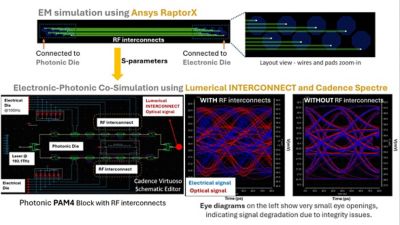
A new signal integrity co-packaged optics (CPO) workflow focuses on the effects of radio frequencies on optical signals in 3D integrated circuits (3D-ICs).
How does this release improve usability for engineers and designers?
Meyer: The 2025 R1 version features a new modern user interface for Ansys Lumerical FDTD software. This interface includes a tabbed toolstrip menu with distinct tabs for each solver: FDTD, RCWA, and STACK. It’s designed to be intuitive, enhancing the user experience by reducing the time spent searching for features and increasing time for design and innovation. The interface also supports dynamic dimensioning, 4K graphics, high DPI, and both light and dark themes.
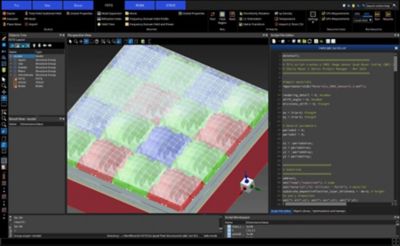
The 2025 R1 version features a new modern user interface for Ansys Lumerical FDTD software, which includes a tabbed toolstrip menu for each solver.
About Optics 2025 R1
As we’ve seen, Optics 2025 R1 is brimming with new features and capabilities that will significantly enhance the design and simulation experience for both optical and photonics engineers. From tackling stress birefringence to introducing PySpeos and improving simulation speed, this release addresses key industry challenges, making it an exciting time for those in the field. We look forward to seeing how these innovations continue to shape the future of optics and photonics.
Optics 2025 R1 is the latest release of our Optics suite of engineering simulation software, offering powerful tools for optical and photonics design. With improved simulation performance, better usability features, and new capabilities like PySpeos and the co-packaged optics workflow, Optics continues to push the boundaries of innovation in these industries. Learn more about this simulation software.







